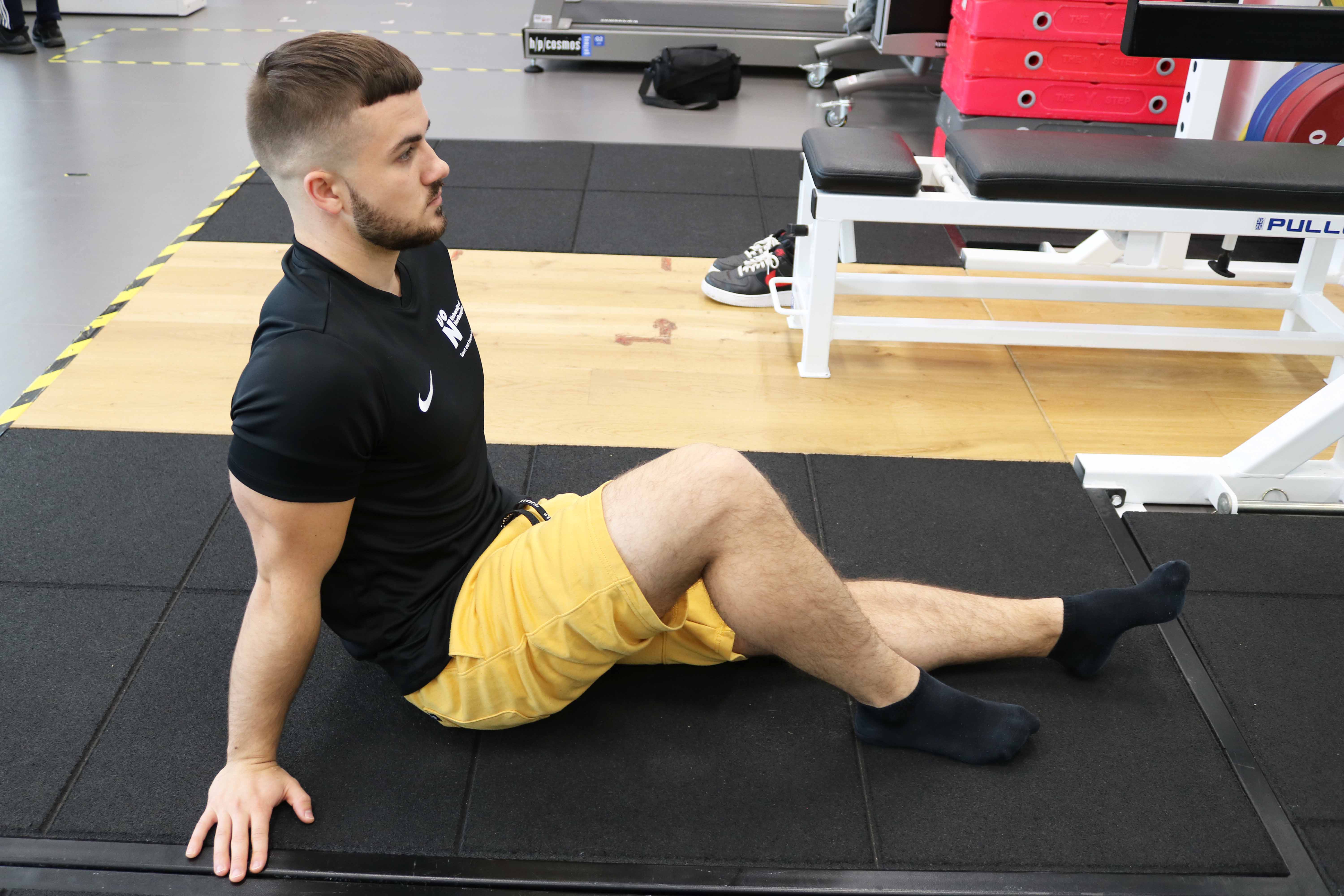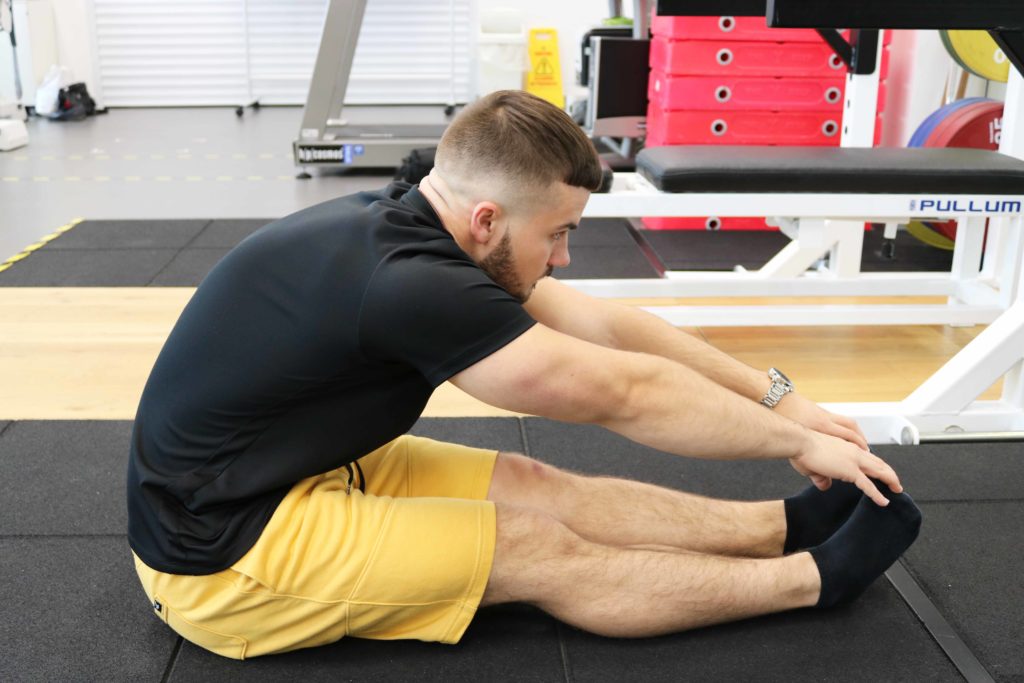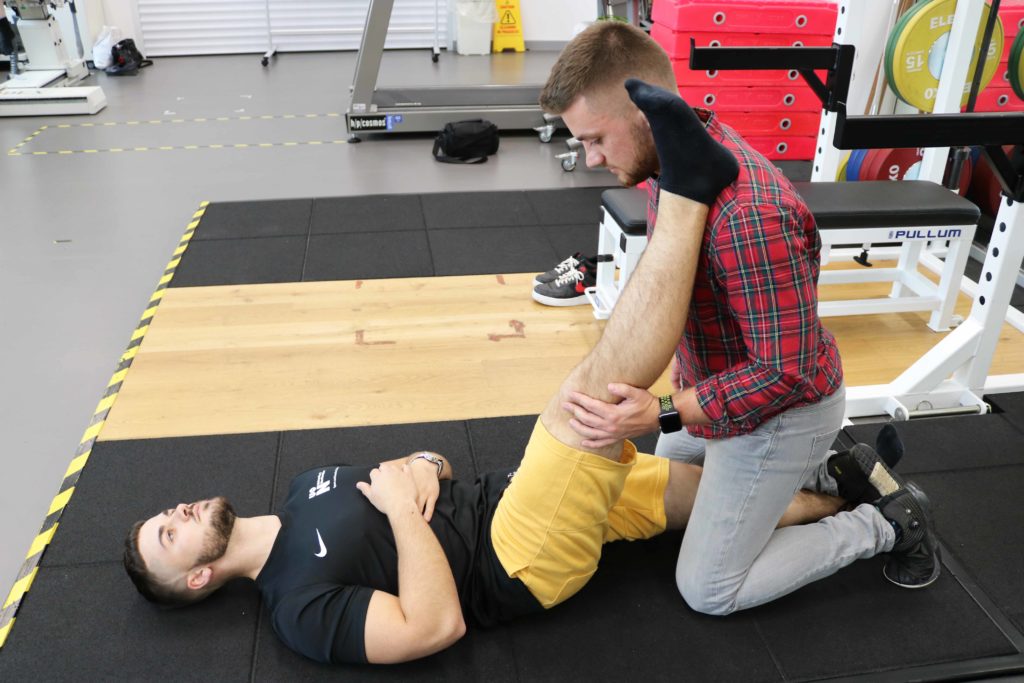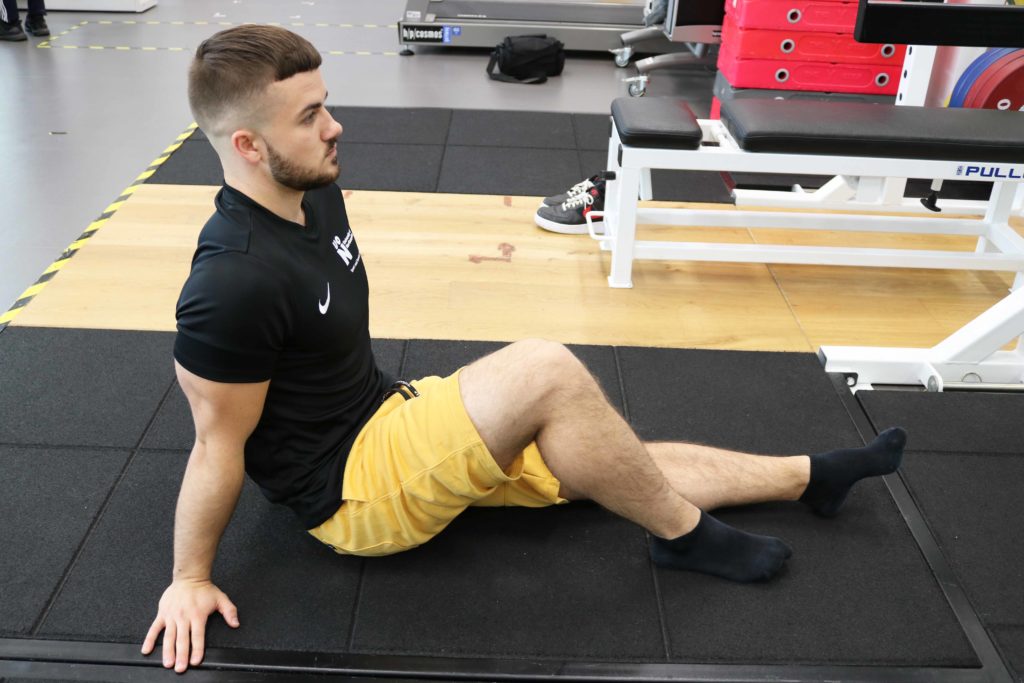UON researchers stretch themselves to come up with best way to improve the body’s flexibility
Date 22.10.2019
22.10.2019
Athletes, the elderly and those with brain and spinal injuries could benefit from research which aims to devise the best stretching techniques to improve the body’s flexibility.
Researchers from the University of Northampton have conducted a series of studies to determine the most effective methods of stretching muscles, to allow people to safely compete in sports and for those with injuries, diseases or physical impairments to regain normal physical function.
The most commonly used method of stretching is static, where the relaxed muscle is lengthened and held – like in the photo below.

Traditional static stretching of the hamstring muscle group.
However, the method with the greatest effect, known as proprioceptive neuromuscular facilitation, or PNF, for short, sees the muscle contracted while in a fully stretched position – like in the photo below.

Traditional PNF stretching of the hamstring muscle group is two-stage process using a partner or clinician to stretch to muscle group then provide resistance during the contraction.
The problem with PNF is that it requires a partner to hold the stretcher’s limb, and there’s a risk of pain, minor muscle damage or soreness afterwards. This means that while it produces better results, it’s not the most commonly used in athletic or clinical settings.
The team from Northampton, led by the University’s Professor of Biomechanics, Tony Kay, and Professor Anthony Blazevich from Edith Cowan University, has developed a variation of PNF, where the muscle is contracted in a shortened position after stretching – see the photo below for an example. The team found this simple change in technique removed the two drawbacks of PNF stretching, while providing identical immediate gains in flexibility.

An isometric contraction phase, contracting the hamstring group in a shortened position.
The team is now planning to examine the long-term effects of this technique.
Prof Kay said: “The technique might be useful in those with significant flexibility decrements, such as older adults, people with brain or spinal cord injuries, or degenerative conditions including multiple sclerosis or cerebral palsy.
“This technique is equally effective at increasing flexibility as the current best method (PNF) but without the practical drawbacks, which should improve its use in applied and clinical environments.
“We have taken basic science research examining how stretching influences muscle tissue to develop translational research confirming a more practical and yet equally effective stretching technique.
“We have confirmed this new stretching technique works effectively across different muscle groups and is simple to perform, which removes the need for a partner.”
Read the full research manuscript here.